Introduction
Sago cakes, commonly known as Sha Qi Ma in Chinese, are a sweet, chewy, and delightful treat enjoyed by many. These golden-brown, syrupy snacks are often associated with festivals and special occasions due to their rich and indulgent taste. While traditionally made with flour, eggs, and sugar, the process can be adapted to suit various dietary preferences and culinary styles. In this comprehensive guide, we will walk you through the step-by-step process of making homemade sago cakes, ensuring you achieve a perfect balance of sweetness, texture, and flavor.
Understanding the Ingredients
Before diving into the recipe, let’s break down the key ingredients and their roles in creating the perfect sago cake:
-
Flour: The foundation of the dough. All-purpose flour works well, but you can also use a blend of flours for a different texture or gluten-free alternatives for dietary restrictions.
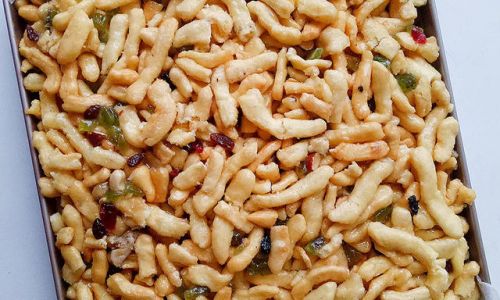
-
Eggs: Provide structure and richness to the dough. The yolks contribute to the golden color and tender texture of the final product.
-
Sugar: The primary sweetener. You can use granulated sugar, brown sugar, or a combination for a deeper caramel flavor.
-
Corn Syrup or Honey: Adds moisture and a glossy finish to the sago cakes. Corn syrup prevents crystallization, ensuring a smooth texture, while honey adds a natural sweetness and subtle flavor.
-
Baking Powder: Helps the dough rise slightly, giving the sago cakes a light and airy texture.
-
Vanilla Extract: Adds a hint of vanilla flavor, enhancing the overall taste.
-
Vegetable Oil: For frying. It should have a high smoking point to avoid burning the dough.
-
Water: Used in the syrup to achieve the desired consistency and to help the sugar dissolve evenly.
-
Salt: A pinch enhances the sweetness and brings out the flavors of the other ingredients.
Equipment Needed
- Mixing bowls
- Whisk or electric mixer
- Rolling pin
- Knife or pizza cutter
- Deep frying pan or fryer
- Candy thermometer
- Baking sheet lined with parchment paper
- Spatula
- Sieve or fine-mesh strainer
Step-by-Step Recipe
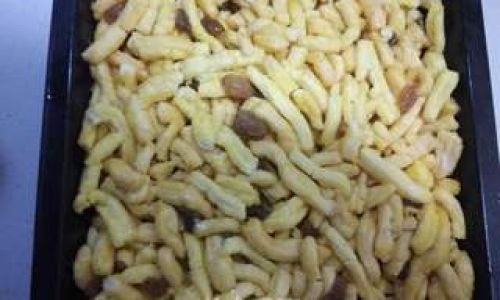
Step 1: Prepare the Dough
-
Combine Dry Ingredients: In a large mixing bowl, whisk together 2 cups of all-purpose flour, 1 teaspoon of baking powder, and a pinch of salt. Set aside.
-
Mix Wet Ingredients: In another bowl, beat 3 large eggs and 1/4 cup of granulated sugar until well combined. You can use an electric mixer for a smoother texture.
-
Combine Wet and Dry: Gradually add the dry ingredients to the wet ingredients, mixing until a dough forms. If the dough is too dry, add a tablespoon of water. If it’s too sticky, add a bit more flour. Knead the dough lightly on a floured surface until smooth.
-
Rest the Dough: Cover the dough with a damp cloth and let it rest for about 20 minutes. This helps relax the gluten, making the dough easier to roll out.
Step 2: Roll and Cut the Dough
-
Roll Out the Dough: On a lightly floured surface, roll the dough out to about 1/4-inch thickness. Aim for a rectangular shape for easier cutting.
-
Cut into Strips: Use a knife or pizza cutter to cut the dough into thin strips, about 1/2-inch wide and 4-5 inches long. Alternatively, you can cut the dough into small squares or diamonds.
-
Separate the Pieces: Place the dough strips on a lightly floured surface to prevent sticking.
Step 3: Prepare the Syrup

-
Combine Ingredients: In a medium saucepan, combine 1 cup of granulated sugar, 1/2 cup of light corn syrup (or honey), and 1/4 cup of water. Stir gently to combine.
-
Cook the Syrup: Place the saucepan over medium-high heat and bring the mixture to a boil. Insert a candy thermometer and cook until the syrup reaches the soft ball stage, which is about 235°F (113°C). This stage is crucial for achieving the right texture in your sago cakes.
-
Remove from Heat: Once the syrup reaches the desired temperature, remove it from the heat and set aside.
Step 4: Fry the Dough Strips
-
Heat the Oil: Pour enough vegetable oil into a deep frying pan or fryer to cover the dough strips. Heat the oil to 350°F (175°C).
-
Fry the Dough: Carefully place a few dough strips into the hot oil, being careful not to overcrowd the pan. Fry until golden brown, about 1-2 minutes per batch. Use a slotted spoon or spatula to flip the strips halfway through for even cooking.
-
Drain the Oil: Remove the fried dough strips from the oil and let them drain on a paper towel-lined plate. Continue frying the remaining dough strips in batches.
Step 5: Assemble the Sago Cakes
-
Combine with Syrup: Once all the dough strips are fried, quickly pour the hot syrup over them in a large mixing bowl. Use a spatula to gently toss and coat the strips evenly with the syrup. Work quickly as the syrup will start to set.
-
Form the Cakes: Once the dough strips are well coated, transfer them to a baking sheet lined with parchment paper. Use your hands or a spatula to press the strips together into a single layer, forming a rectangular or square shape. Press firmly to ensure they stick together.
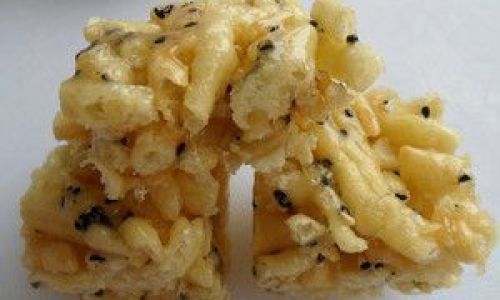
-
Cool and Cut: Allow the sago cakes to cool completely at room temperature. This will take several hours or overnight. Once fully cooled, use a sharp knife to cut the cakes into bite-sized pieces.
Step 6: Serving and Storage
-
Serve: Your homemade sago cakes are now ready to serve. Enjoy them as a sweet snack, dessert, or a treat with a cup of tea or coffee.
-
Store: Store the sago cakes in an airtight container at room temperature for up to a week. They can also be frozen for longer storage. To freeze, place the pieces in a single layer on a baking sheet, freeze until solid, then transfer to an airtight container or freezer bag.
Troubleshooting Tips
- Dough is Too Sticky: Add a bit more flour while kneading.
- Dough is Too Dry: Add a tablespoon of water and knead until smooth.
- Syrup is Too Thick: If the syrup crystallizes or becomes too thick, gently reheat it until it reaches the soft ball stage again.
- Sago Cakes are Too Hard: Ensure the syrup reaches the correct temperature and that the dough strips are not overcooked.
Creative Variations
- Add-Ins: Incorporate chopped nuts, dried fruit, or chocolate chips into the dough for added texture and flavor.
- Flavored Syrup: Infuse the syrup with cinnamon sticks, star anise, or vanilla beans for a unique twist.
- Glaze: Drizzle a chocolate or caramel glaze over the cooled sago cakes for an extra layer of sweetness.
Conclusion
Making homemade sago cakes (Sha Qi Ma) may seem like a daunting task, but with the right ingredients and careful attention to each step, you can achieve delicious, professional-quality results. This recipe not only provides a classic version but also offers creative variations to suit your taste preferences. Whether you’re celebrating a special occasion or simply indulging in a sweet treat, homemade sago cakes are sure to delight your taste buds and bring a smile to your face. Enjoy the process and the delicious outcome!
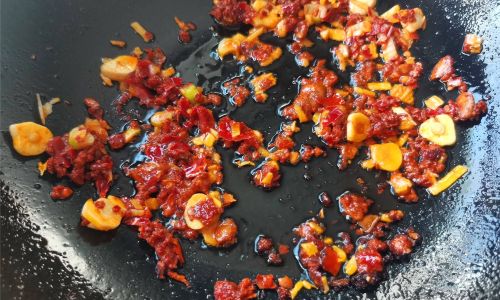
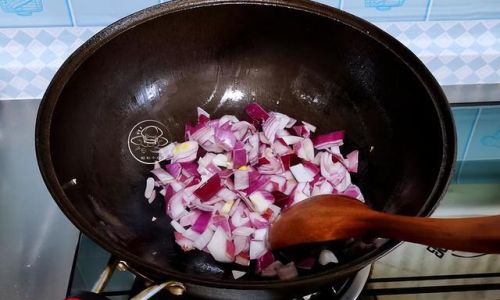
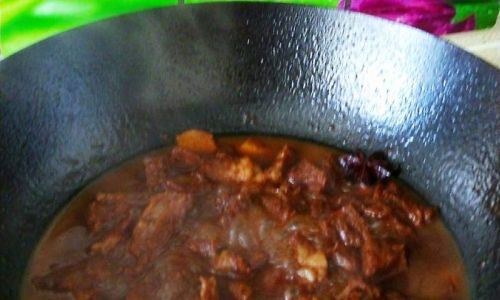


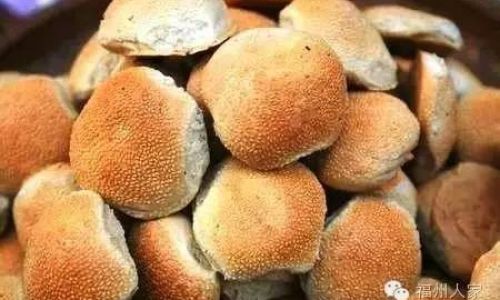
0 comments